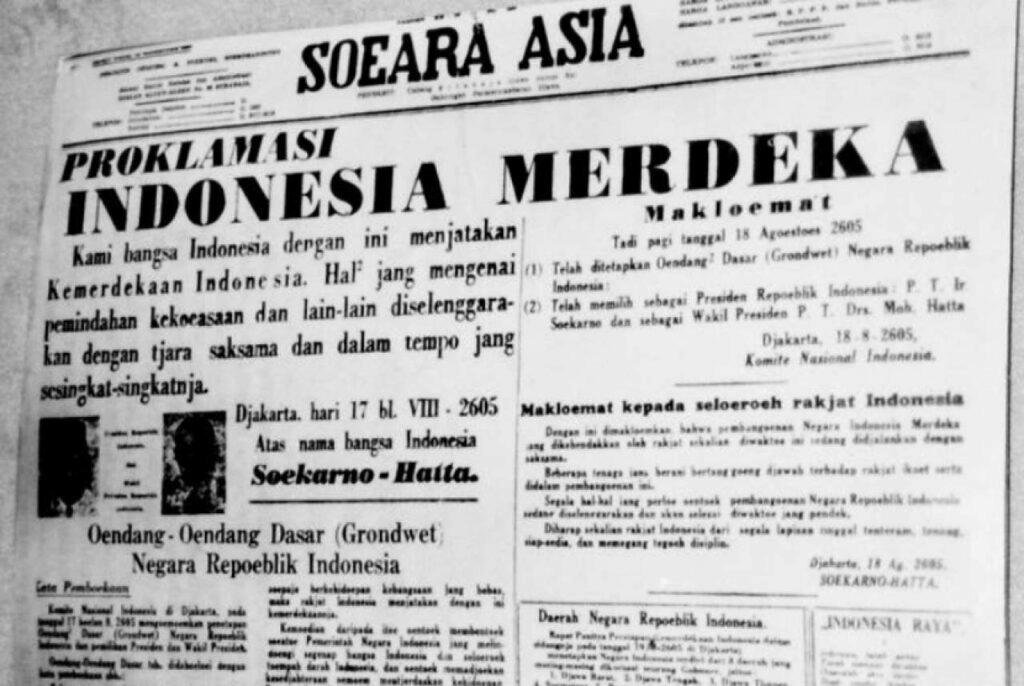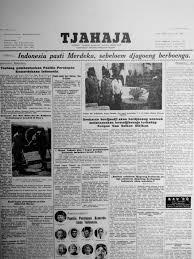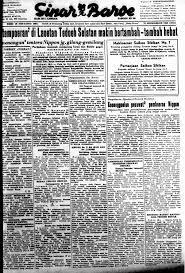theIndonesian – Journalism has a very long history. According to the encyclopedia website www.questia.com, the first recorded journalism was during the ancient Roman Empire, when daily information was sent and posted in public places to inform people about state issues and local news. Over time, society began to develop various methods to publish news or information.
At first, the publication of information was only created for a limited circle, especially government officials. It wasn’t until around the 17th-18th century that newspapers and magazines for the public were published for the first time in Western Europe, England and the United States.
These public newspapers often faced opposition and censorship from local authorities. A more favorable climate for this first generation of newspaper publishing only emerged in the mid-18th century, when several countries, such as Sweden and the US, passed press freedom laws.

The newspaper industry began to show tremendous growth when the culture of reading became more widespread. Especially when entering the Industrial Revolution, where the newspaper industry benefited from the existence of steam-powered printing machines, which could boost oplag to meet public demand for news.
As the news business became more and more sophisticated, in the mid-1800s, news organizations began to develop that gathered news and stories for distribution to various newspaper and magazine publishers.
News agencies were able to gain popularity very quickly. Newspaper owners could save money by subscribing to them rather than paying journalists to travel or be stationed in different regions. Old news agencies that still operate today include the Associated Press (US), Reuters (UK), and Agence-France Presse (France).
The 1800s were also marked by the emergence of the term yellow journalism, a term for the “headline battle” between two major newspapers in New York City. One was owned by Joseph Pulitzer and the other by William Randolph Hearst.

The hallmark of yellow journalism is bombastic, sensationalized reporting and headlines that grab the public’s attention. The goal was only one, to increase sales! Yellow journalism did not last long, along with the emergence of the awareness of journalism as a profession.
For the record, the first generation of newspapers in the US were initially partisan, and easily attacked politicians and presidents, without objective and balanced reporting. However, the journalists later realized that the news they wrote for the public should have social responsibility.
The awareness of professional journalism encouraged journalists to form their own professional organizations. The first professional journalism organization was established in the UK in 1883, followed by journalists in other countries in the following period.

Journalism courses began to be organized in many universities, which led to concepts such as unbiased and accountable reporting, as quality standards for professional journalism.
Journalism in Indonesia
What about in Indonesia? National press figure, Soebagijo Ilham Notodidjojo in his book PWI in the Arena of Time (1998) wrote, Tirtohadisoerjo or Raden Djokomono (1875-1918), founder of the weekly Medan Prijaji which since 1910 has developed into a daily, as the initiator of the national press. This means that he was the first to establish a publication with national capital and an Indonesian leader.

In its later development, the Indonesian press became one of the tools of the nation’s independence struggle. A number of literatures write that one of the first facilities captured in the early days of independence was a printing facility owned by Japanese newspaper companies such as Soeara Asia (Surabaya), Tjahaja (Bandung), and Sinar Baroe (Semarang).

The condition of the Indonesian press strengthened in late 1945 with the publication of several newspapers that propagated Indonesian independence such as Soeara Merdeka (Bandung), Berita Indonesia (Jakarta), and The Voice of Free Indonesia.

As in other parts of the world, the Indonesian press was characterized by acts of silencing and banning. The nation noted that the first banning since independence occurred in the late 1940s. Several newspapers from the People’s Democratic Front (FDR) that were considered left-wing such as Patriot, Buruh, and Suara Ibu Kota were banned by the government.
On the contrary, the FDR retaliated by silencing the Api Rakjat newspaper, which voiced the interests of the National Front. Meanwhile, the military had also banned Suara Rakjat on the grounds that it criticized their side too much.

Yellow journalism also colored the Indonesian press world, especially after Soeharto stepped down as president. Bombastic headlines and news colored the front pages of new newspapers and magazines. However, it seems that yellow journalism in Indonesia has not completely faded away. It is proven that until now there are still online media that still present such sensational news.
Technology in Journalism
Journalism activities are closely related to the development of publication and information technology. In the period between 1880-1900, there were various advances in journalistic publications. Most notable was the use of fast printing presses, so that news writing deadlines could be postponed until the evening and the appearance of photographs in newspapers.
In 1893 for the first time newspapers in the US used color ink for comics and some sections in the Sunday edition of the newspaper. Then in 1899, recording technology began to be used on tape, although it was not widely used by journalists at that time.

Meanwhile, in the 1920s, newspapers and magazines got a new competitor in reporting, with the rise of radio news. However, the print media did not lose its readers, because the news broadcast by radio was shorter and fleeting. It was only in the 1950s that people’s attention was slightly diverted by the emergence of television.
The rapid development of computer technology in the 1970-1980 era also changed the way and process of news production. In addition to deadlines that could be postponed as long as possible, the printing process, print copies that could be done massively, layout, to advertising, and marketing underwent enormous changes with the use of computers in the mass media industry.
In the 1990s, the use of computer technology was not limited to the newsroom. Increasingly sophisticated notebook computer technology equipped with modems and wireless technology, as well as access to text, photo and video news delivery via the internet or via satellite, has made it easier for journalists covering even the most difficult terrain.
In addition, this era has also seen the emergence of multimedia journalism media. Giant media companies have penetrated various market segments and news readers. Not only do they run print, radio and television businesses, but also the internet, with its vast advertising space.

Every media entrepreneur and news agency today is required to have this internet media in order not to lose the competition and in order to disseminate its news to various groups. Every well-known print or electronic media must have a news site on the internet, which can be updated within minutes. There are also those who still present the internet edition exactly the same as the print edition.
Meanwhile, in the 2000s, personal websites emerged that also contained journalistic reports from their owners. The term for this personal site is weblog and is often abbreviated to just blog.
Not all blogs contain journalistic reports. But many do contain quality journalistic reports. Journalism Review senior editor JDLasica once wrote that blogs are a form of journalism and can be used as a source for news.
In the use of technology, Indonesia may be a bit late compared to mass media from developed countries such as the US, France and the UK. But for now the use of technology in Indonesia – especially for television media – is very advanced.
Based on data from the Press Council in early 2023, there were 1,711 media companies in Indonesia that had been verified as of January 2023. Of these, digital media dominated as many as 902 companies. Now, an online media called TheIndonesian.id is ready to become a new player in the online media industry.
The Indonesian







